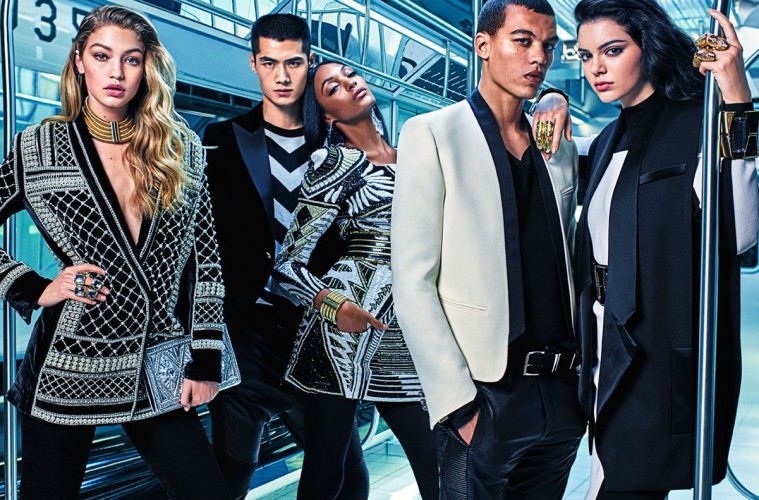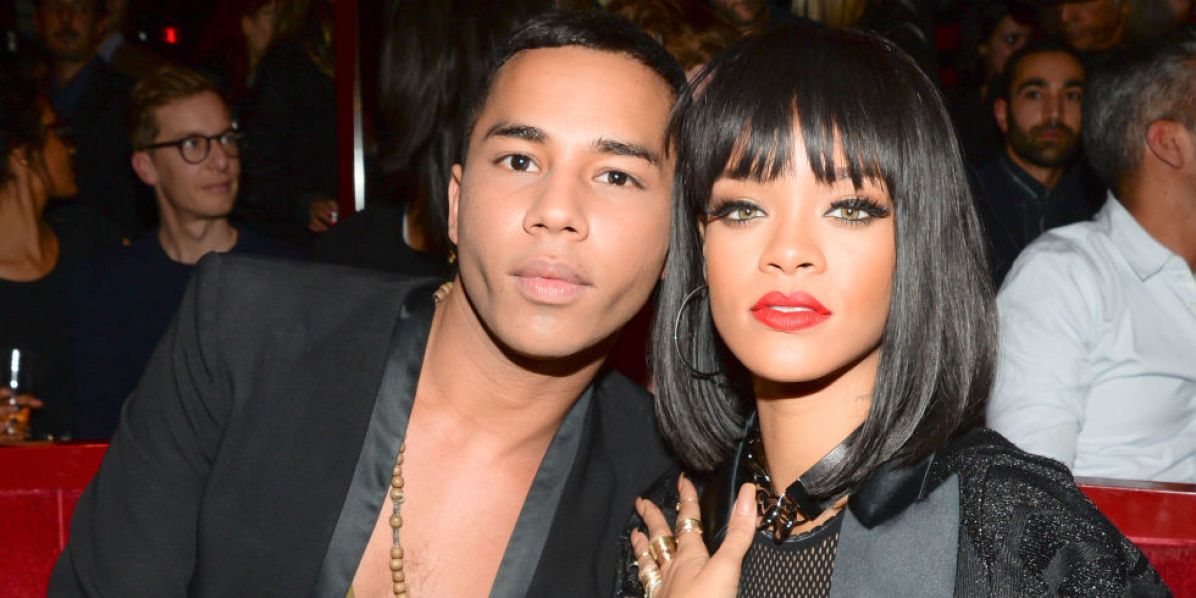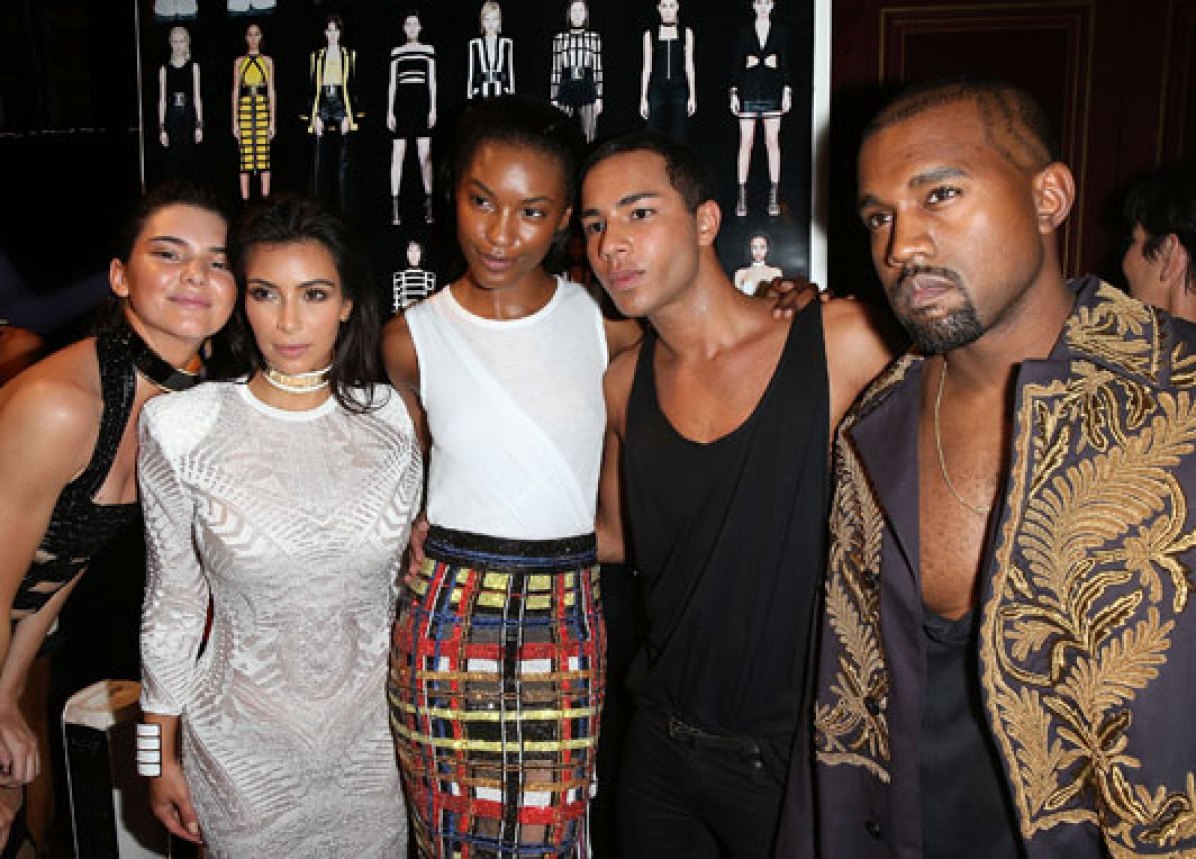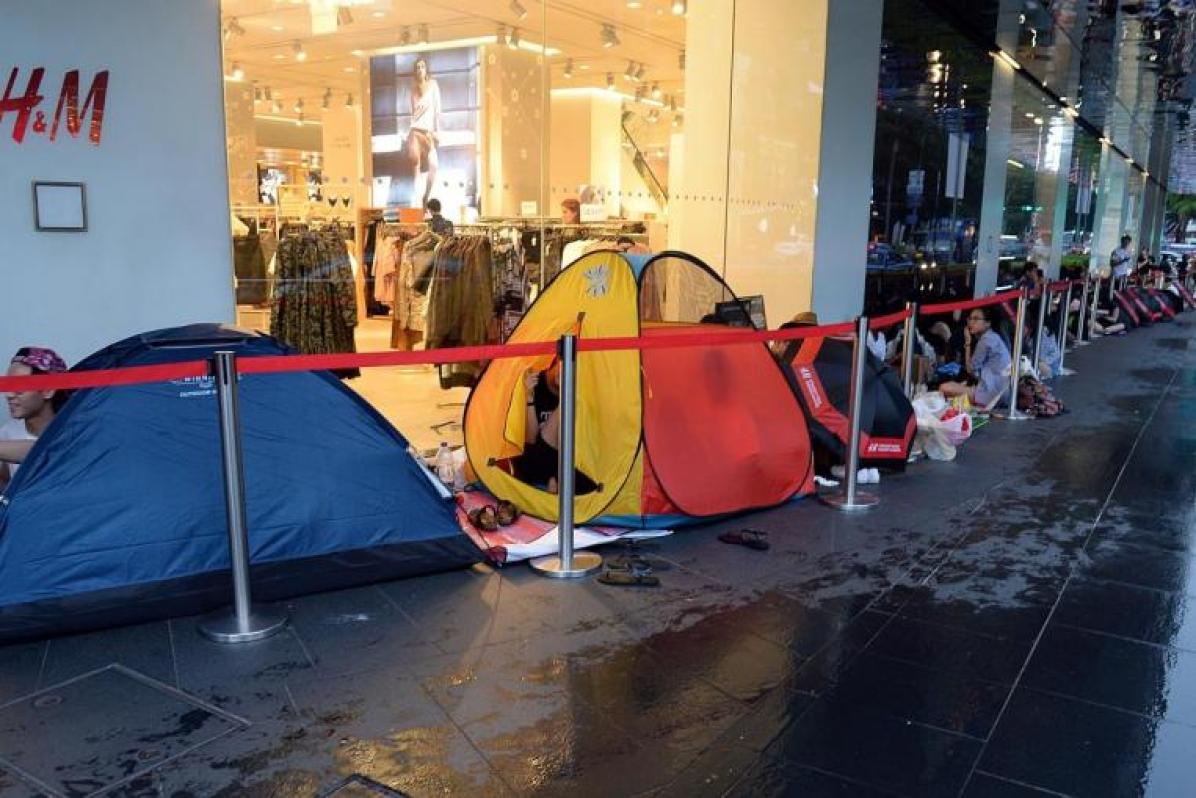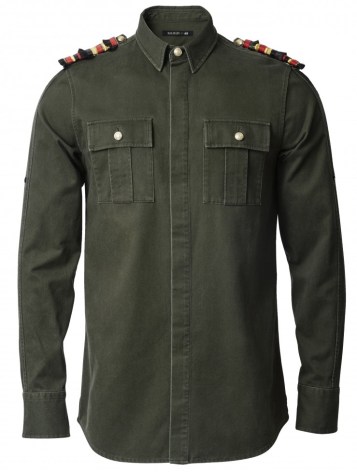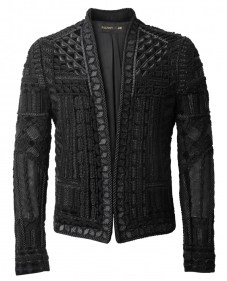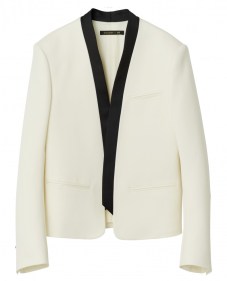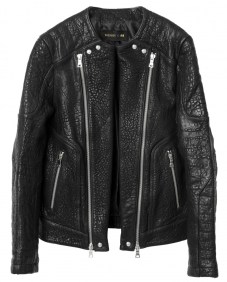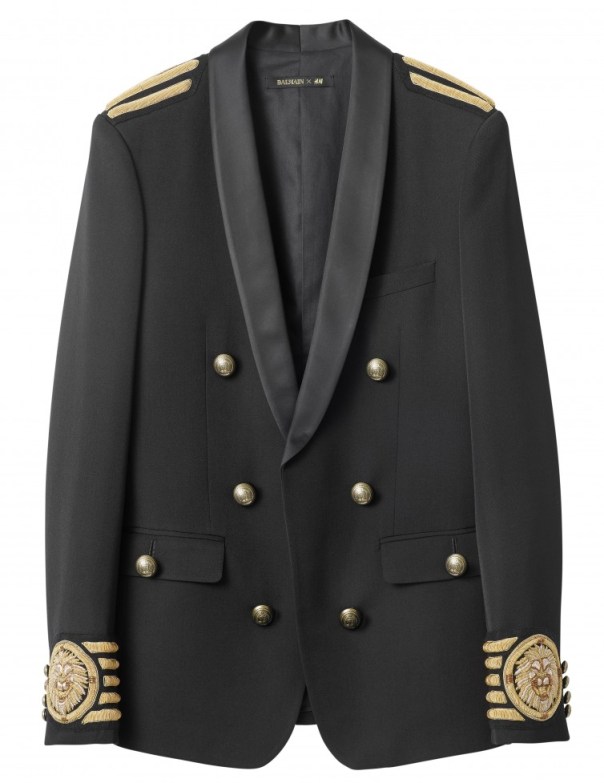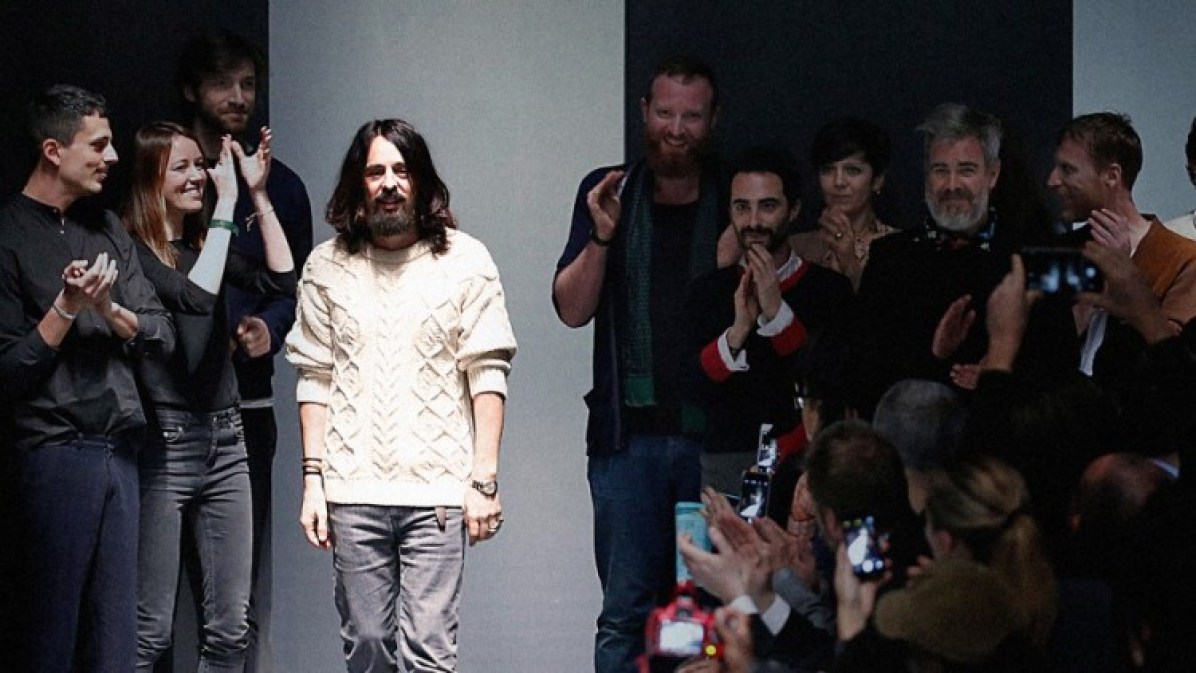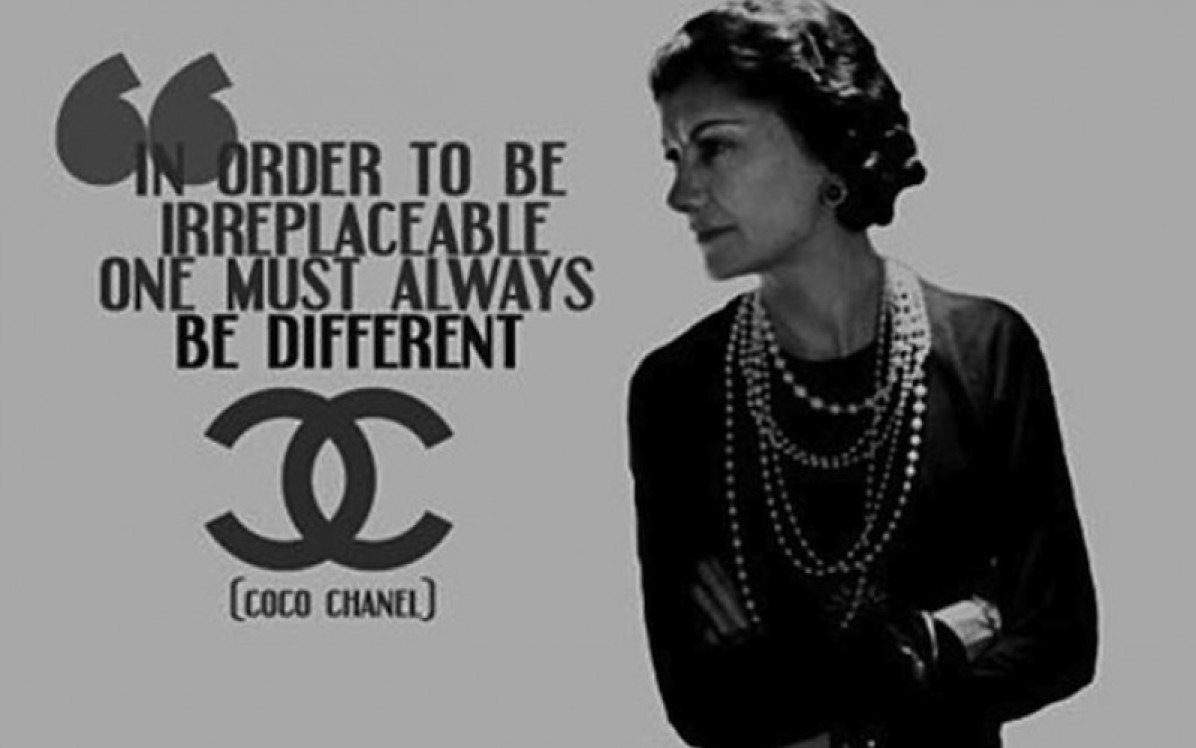Ask a millennial queueing outside H&M on November 5 if he knew Balmain five years ago, he’d most likely say no. And of course, if you didn’t already know, he’d be queueing there because of the launch of the much anticipated Balmain x H&M collaboration.
Imagine Chanel working with GAP back in the eighties – it would never have happened. So why isn’t Balmain worried about denting their brand prestige by working with H&M?
The answer is simple: Olivier Rousteing – Balmain’s creative director, fashion’s latest wunderkind and pop-star arm candy. Young and handsome, he was Justin Bieber’s wingman (or was it the other way around?) at the Met Gala this year, and is often seen hanging out with the Kardashians, Gigi Hadid, and Rihanna.
His Instagram account has 1.4 million followers, whom he affectionately calls “the Balmain Army”. Thanks to Rousteing’s digital clout, Balmain’s recently staked out a place in pop culture, even earning a mention alongside Alexander McQueen in Nicki Minaj’s Anaconda.
Without Rousteing, Balmain would never have dreamt of working with H&M. With Rousteing, everyone from Beyoncé to Kendall Jenner is getting behind the collaboration. So will his legion of fans, and possibly their networks. Which means no one’s thinking – oh, Balmain’s tarring its repute by working with mass retailers. Instead, Balmain’s so hip! So current!
THE NEW ORDER?
Welcome to the new normal of the fashion world. Most consumers care little about the heritage of a maison, much less bother finding out what each one’s signature style is. No one’s looking for a brand to be loyal to. A brand’s “prestige” used to matter, and be enough. Not anymore.
What the consumers want to know is if their favourite influencers – A-list actors, fashion bloggers, Kimye – are raving about the brand. Pop culture has swallowed the fashion industry whole. And just like pop culture, fashion to the average millennial is all about the newest, the latest, the coolest. Olivier Rousteing is cool, and therefore so is Balmain, and Balmain x H&M.
But can you blame them? There are so many brands around, even Miranda Priestly can’t grasp them all.
This new order is also responsible for, or perhaps brought upon by, the rise of fast fashion. It’s why H&M, Zara, and Uniqlo have managed to do so well: there’s always something new to buy. And for more than a decade now, the fashion industry has been struggling to keep up.
All, these, brands! Ugh! Source: Giphy.com.
EMBRACING MASS RETAILERS
Collaborations with fast fashion have become a way to leverage this new order. For mass retailers without anything unique to sell except its affordability, working with an iconic brand reaps tremendous marketing rewards.
(Let’s be honest: most of us would rather H&M spend its dollars on improving the quality of their goods, than on its multi-million dollar ad campaigns. Isn’t there enough marketing?)
According to analytics firm Crimson Hexagon, the buzz over last year’s Alexander Wang x H&M collaboration more than tripled the Swedish giant’s positive impressions on social media. And during the week of the launch, mentions signalling an intent to purchase rose from a baseline 14% to 50%.
For Balmain, it’s an opportunity to gain huge exposure via H&M’s ubiquitous marketing spots and stores. People who didn’t know Balmain’s couture designs will get a glimpse of it, and those who love the collaboration items may become loyal aspirationals for the brand.
The consumer’s excitement over the collaboration is well justified. The Balmain x H&M menswear collection looks great – we particularly love the wool pea coats, embroidered jackets, biker trousers, and the shirt with a hidden placket and military details.
In fact, many of these items closely mirror those Rousteing displayed in his SS16 Paris show, which means the “masses” aren’t going to be cheated out of any Balmain-ness simply because they’re buying the brand on main street.
Olivier Rousteing himself put it best: “Balmain is a luxury label of expense and exclusivity that only a few can afford, but I also believe that fashion should be inclusive.” Karl Lagerfeld also said the same thing ten years ago when his unprecedented collaboration with H&M happened.
ROUND AND ROUND WE GO
It seems like everyone is happy, but there is a cost in playing by the rules of the new normal. This embrace of star power is revealing a serious fault in the industry: maisons — the erstwhile stars — are at the risk of fading away.
Fashion houses have gone from being sought after by the best designers to hedging their bets on the newest in town. No longer do the maisons pick designers to build on their legacies – it’s now all about which fresh-faced ingénue they can find to rethink the brand. Just wait, this newbie will be the next darling of the runway!
Think Riccardo Tisci, Tom Ford, Marc Jacobs – all of them celebrities in their own right. To be sure, they’ve all accomplished the formidable tasks of reviving maisons that were on the verge of obsolescence. But once they left the maisons to establish their own eponymous brands, their fans followed them, and the maisons fell out of fashion all over again.
As though we needed more evidence of a trend, just last week we heard news of Alber Elbaz leaving Lanvin. Earlier, Raf Simons said goodbye to Dior. Not so long ago, Alexander Wang left Balenciaga, and Frida Giannini left Gucci.
Perhaps it’s a necessary changing of the guard. After all, fashion houses with their resources, are best positioned to fund and groom fledging designers. Without Balmain, Rousteing wouldn’t have had the platform to become as famous as he is now. Eventually eponymous brands may take over the industry, and become the new maisons.
And let’s not forget that some of the most revered fashion houses we know now were also started by individual designers – Coco Chanel, Gianni Versace, Yves Saint Laurent – celebrities of their time. As new as the rules of the game are, perhaps nothing has changed.
Oh, fashion. What a merry-go-round you are.


